Your paid subscription helps support the research and writing that makes History Buzz possible. If you like this story, please help spread the word by liking, commenting, sharing, and subscribing.
This is a face I couldn’t ignore. How did it get here?
PLASTER CASTS, PIETRO CAPRIONI, AND PUBLIC SCHOOLS
Part 1: About plaster casts
Plaster casts of great works of Western art have been collected, studied, and exhibited since the 15th century. Fueled by a growing interest in Greek and Roman classics and all things Neoclassical, the popularity of plaster casts reached a peak in the 19th century. The low cost of casts made it possible for museums and public and private schools to collect accurate replicas of great works of art and architecture for study and classroom decoration.
The plaster casts in the History Center’s collection were made by Boston-based P.P. Caproni & Brother. The company started in Boston in 1835 by Francis Chickey and master plaster caster Paul Garey. Garey frequently worked the sculptor Daniel Chester French, who created the Lincoln Memorial in Washington, DC.
In 1892, Garey’s apprentice, Pietro Paulo Caproni, purchased the company with his brother. The brothers’ gallery and studio were located neighboring buildings in Boston on Newcomb and Washington Streets. The building at 1914 Washington Street still has the company name over the door, although it lacks the enormous gargoyles that once graced the front corners of the roof.
Pietro Caproni was a master craftsman who traveled to Europe to make molds directly from masterpieces in museums including the Louvre, the National Museum in Athens, the Vatican, the Uffizi Gallery, and the British Museum. By 1911, the firm’s collection has grown to over 4,000 pieces. Reproductions of the collection were sold to museums, including Boston’s Museum of Fine Arts, schools, and private collectors.
Hidden away for over 30 years
Following Pietro Caproni’s death in 1928, the gallery and studio remained untouched until the 1960s when the buildings and contents were purchased by Lino Giust.
It took nearly 10 years for Giust to restore the building and what remained of the Caproni collection. After becoming an expert plaster caster himself, he opened The Giust Gallery. In the 1970s and 1980s, The Giust Gallery also maintained an art gallery and showroom on Newbury Street in Boston, in addition to their Washington Street gallery.
In 1992, the company was acquired by sculptor Robert Shure and his wife Kathleen Shure. Robert Shure has created many public works of art including Boston’s Irish Famine Memorial in Downtown Crossing. Together Robert and Kathleen are working to recover more original Caproni casts, enlarging the collection, and making copies of the Caproni product catalogs available on their website.
In early 2019, the Shures renamed firm to The Caproni Collection, and moved the company from Boston to Woburn, Massachusetts, where they maintain a showroom, gallery, and studio. You can visit their website here.
Part 2: How the plaster casts came to Andover
The key to unlocking the story of the plaster casts are the medallions embedded on the back of the two plaster masques.
P.P. Caproni & Bro Plastic Arts Boston U.S.A.
Each cast also bears a product number stamp.
#944 Brutus by Michelangelo
#985 Relief by Della Robbia
#1539 Scroll, Monument of Lysicrates, Athens
#4032 Minerva from the Louvre collection
The 1894 Caproni catalog identified all four casts.

The 1899, 1900, 1907, and 1910 School Committee Reports include lists of artwork purchased by the school department and, at times, teachers and students. Plaster statuary, busts, and reliefs; photographs of artwork, paintings, and buildings, and engravings were purchased for every Andover School to uplift and educate students.
By the 1930s, plaster casts had started to fall out of favor, as museums and collectors began to seek out original works of art. Museums and schools began to remove plaster casts.
Punchard High School, where many plaster casts were on display, was closed and demolished in 1935. When the new Punchard High School opened later that year, some of the plaster casts didn’t make the move to the new school. From a classroom postcard and stories told by former students, we know that a large head of the goddess Minerva, also in the History Center’s collection, continued to grace the Latin classroom until the 1960s.
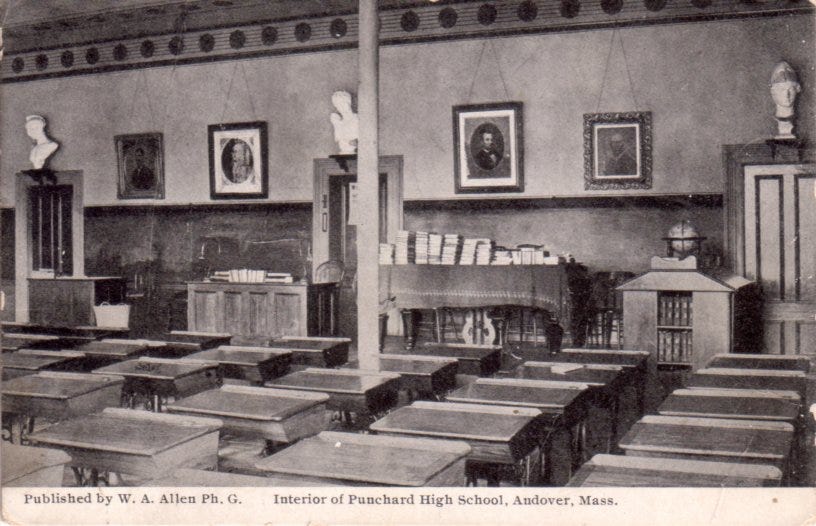
Part 2: How the plaster casts came to the History Center
The two plaster masques and the scroll were donated to the Andover Historical Society by John Vorhees Holt in 1935.
Learn more about the monument here
John V. Holt was a graduate of Punchard School in 1889. Holt was active with the Andover Historical Society (before the History Center changed its name) since its beginning. He was one of fifteen who signed the Historical Society’s Charter of Incorporation in April 1911. He was elected Librarian of the Society, and oversaw the growing collections, exhibitions, and loans. Holt served as President of the Andover Historical Society from 1926 until 1936. In 1929, during his presidency, the Historical Society acquired the Amos Blanchard House at 97 Main Street.
The old Punchard School was demolished in 1935. The following year, Holt donated these three plaster casts to the Andover Historical Society. John V. Holt died in February 1936, while still serving as president of the Historical Society.
Leave a comment and let me know what you think. Thank you for reading, commenting, sharing, and liking.
~Elaine





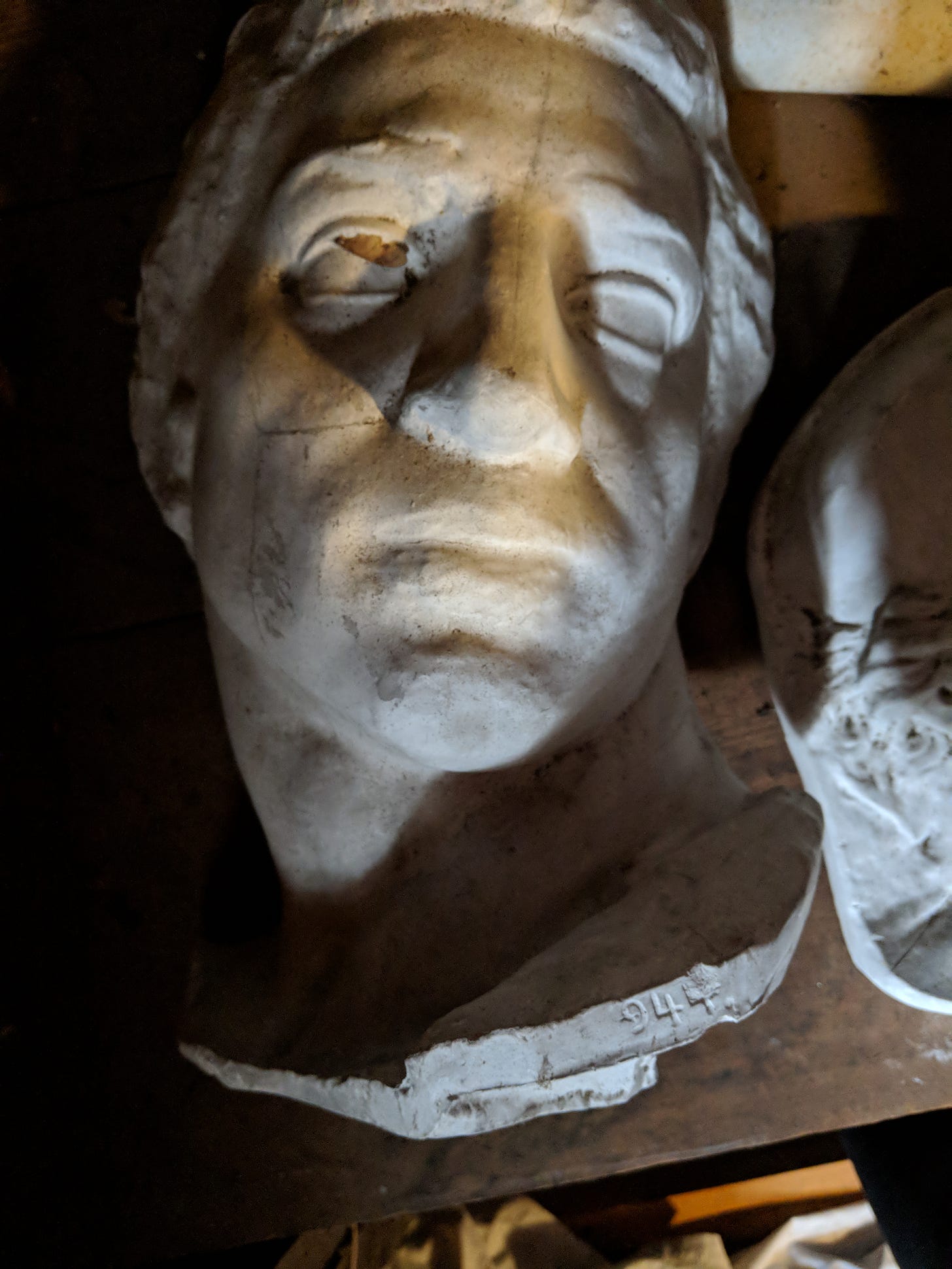

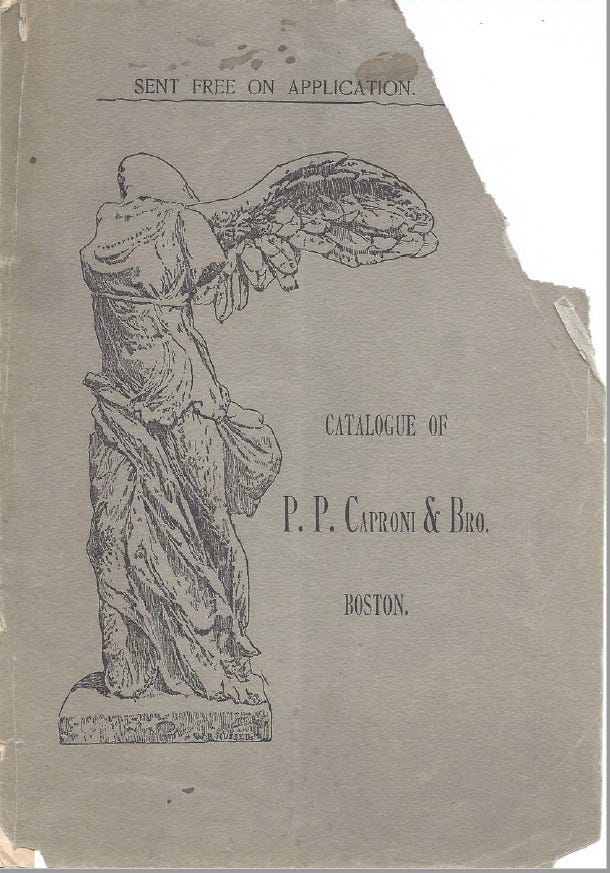

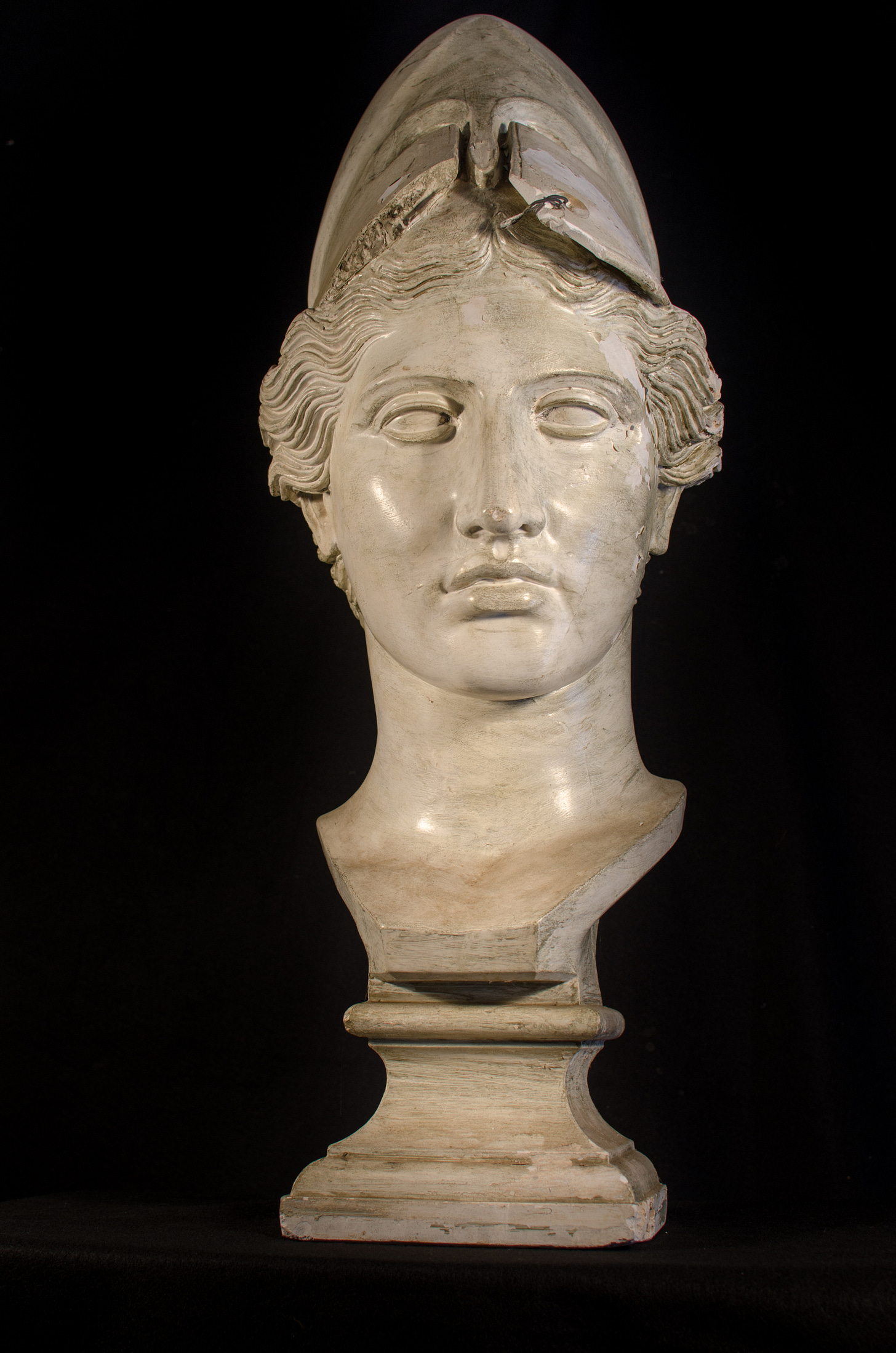

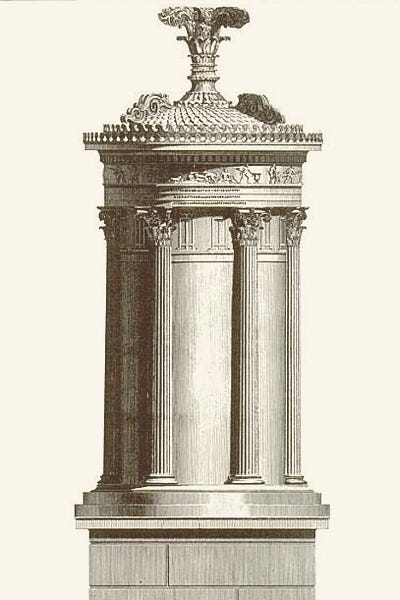
Amazing that we had such forward thinking members of our community. So glad Mr.Holt was one of them!
History Buzz reader Patricia Lee sent us this story about Caproni plaster casts:
Lynn Classical High has 3 sets of Caproni plasters. They were in terrible conditioned after they were moved from the old to the new school in 1999. The art teacher went to the company and they taught her how to restore them.
The first set of 4 were restored by her, 2 art students she had, and 2 husbands of teachers at the school. The next was 24 panels of Alexander's triumphal arrival in Babylon. The art teacher had died, but one of the men she taught and 2 retired teachers (I was one) spent the winter of 2015 restoring them. Finally, 2 years ago, we two retired teachers restored the last set of 2. All hang in the entranceway to the school. It was a labor of love.
There's a funny story that goes along with it. A Lynn Funeral Director, who is an alumnus of Lynn Classical arranged to have the plaster casts transported to the new school for refurbishing in a hearse. Sets 2 and 3 were then, later, brought to his Funeral Home and we did our work in the embalming room that was never in use.